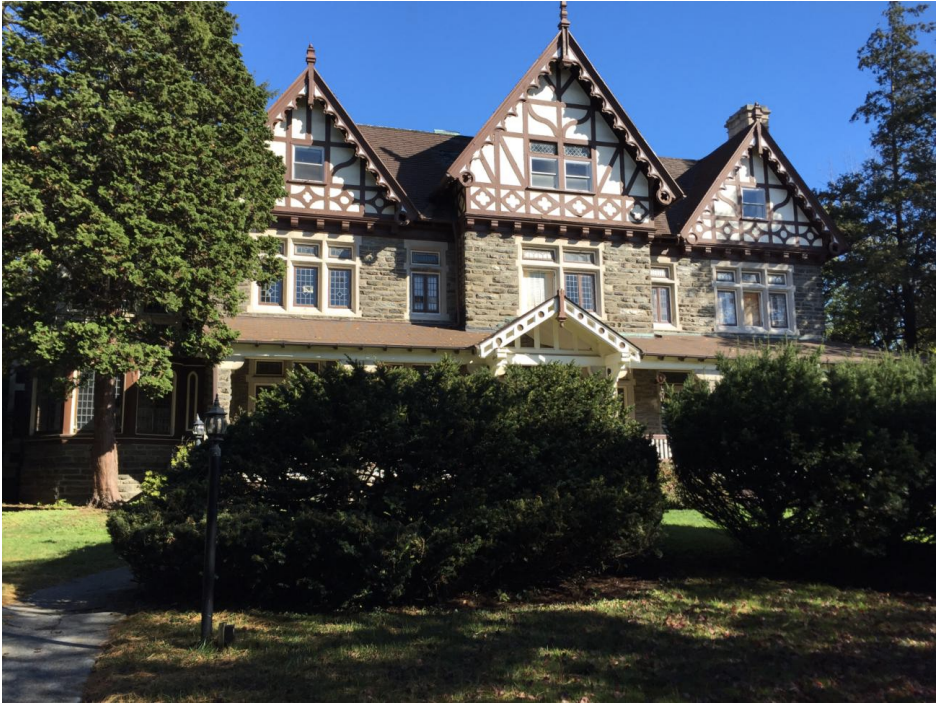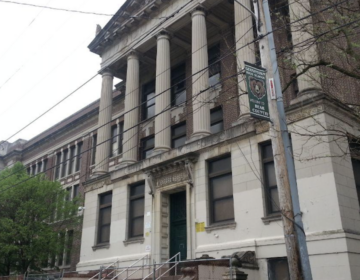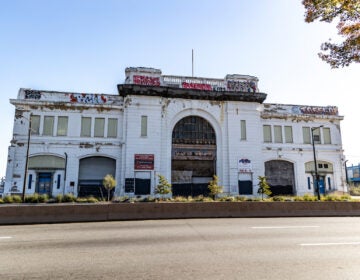Pace of Philly historic preservation accelerates as Historical Commission matches last year’s total by July

At its July meeting, the Philadelphia Historical Commission accepted eight new nominations to the Philadelphia Register of Historic Places, bringing the total number of newly protected individual sites in 2017 to 31.
Midway through the year, the commission has now protected the exact same number of sites as it did in all of 2016, which was then the most new nominations accepted in the last decade.
Compare that with the years 2007 through 2012, when the number of successful nominations never even came close to reaching ten annually. Or 2014, when only two nominations made it onto the the local register.
The 2017 tally is even more impressive because this year saw the first new historic district created since 2010, adding protections to the eight properties on the “420 Row” miniature district in West Philadelphia.
The high number of successful new nominations comes in the midst of the contentious battle over the future of Jewelers’ Row. Partly because of that high-profile controversy, the Historical Commission will add at least two new staffers later this year, marking the first significant staff growth for the perennially short-handed office since 1988.
“I think there are heightened concerns in neighborhoods throughout the city about important buildings that may be lost because of the development boom,” said Paul Steinke, executive director of the Preservation Alliance of Greater Philadelphia, when asked about the spike in successful nominations.
In an interview last year with PlanPhilly, Steinke said that Center City and Germantown are the Preservation Alliance’s highest priority areas. Although the organization itself did not write any of the nominations approved at this month’s meeting, the authors who did mostly focused on those areas.
“Greater Center City is where development pressure is strongest,” said Steinke. “Then Germantown is so historic and so unprotected that there is considerable interest in improving protections in that part of the city.”
Three of the newly protected buildings are in Germantown, a historical but long-undervalued neighborhood, and another two are in the fellow northwestern neighborhoods of Manayunk and West Mt. Airy. Two Chinatown properties were added as well, marking an effort to defend a low-slung and hugely significant corner of booming downtown.
After a vigorous defense from the Historical Commission staff, the committee also notably voted against the delisting of a property at 152 N. 2nd Street. They also approved a “Skyspace” pavilion for the Philadelphia Museum of Art by famed Quaker Artist James Turrell.
NEW SITES ADDED TO LOCAL REGISTER IN JULY
In June, the Historical Commission’s Committee on Historic Designation expressed doubt about the historic value of the Textile National Bank, a stately building that is now overshadowed—literally—by the Market-Frankford elevated line. The building fronts on to Kensington Avenue, which is obscured by the tracks, but the rest of the building still exerts an impressive presence in the neighborhood.
The nominator, H.R. Haas, described the building as “one of the most prominent” banks associated with the once-bustling textile trade in Kensington. It is in remarkably good shape and many of the statues that adorn the building are intact—give or take a limb.
Built of Wissahickon Schist, the twin two-story house, now vacant, dates back to the 1740s. The designators, Oscar Beisert and J.M. Duffin, argue that the building is representative of 18th century development in the neighborhood, when the structure was expanded to its present size by the owner of a bronze foundry who helped arm the Revolutionary armies with artillery equipment.
The authors argue that the building, which looks like a twin house, is actually “an early mixed-use house” used for both residential and commercial purposes and enlarged over time as the surrounding area evolved from its roots as a rural retreat to a full-fledged urban neighborhood.
This complex of buildings is also located in Germantown and is representative of the high end homes that once lined the avenue. But today the block is hedged in by auto-centric uses and the building’s owners, the Sisters of the Good Shepherd, argued against its nomination. The order no longer operates out of the building, as they are now located downtown, but they feared that historic designation would hinder their efforts to sell the property.
The main building is a Second Empire-style villa built of Wissahickon Schist and remains in good conditions. It stands in stark contrast to the surface parking lot and the suburban-style Fresh Grocer that stretches across the other side of the street.
Historian Celeste Morello’s nomination of this Manayunk property details the impressive local legacy of Charles Carmine Antonio Baldi, who lived there over 100 years ago.
The man has an impressive pedigree and there’s even a public school in Far Northeast Philly named after him. His progeny are impressive as well, including a Bucks County Common Pleas judge, a Congressman and great-great granddaughter Taylor Swift, who is mentioned in passing as a “singer and composer of country music with a worldwide audience.”
H.R. Haas’s nomination of this High Victorian Gothic commercial building is a remnant from the age of 19th century middle-class suburbanization that created Germantown as it largely exists today. The nomination argues that the site may also contain relics of historical note underground, given that the parcel contained a physical structure (although not the one that currently exists) as far back as the 1730s.
For a corner of Center City as beloved as Chinatown, very little in the neighborhood is historically protected. H.R. Haas sought to change that at Friday’s meeting, first by attempting to protect this dark brick building that since housed the German-American newspaper called the Philadelphia Gazette-Democrat. The 140-year-old building, built in the Néo-Grec style, even includes a striking wrought-iron cresting that looks like a crown, further distinguishing it from the surrounding buildings.
Haas’s other Chinatown nomination is the former home of the Methodist Episcopal Board of Church Extension, which played a key role in the spread of the religion. (The board funded individual churches elsewhere as they sought to expand.)
The High Victorian Gothic building still include an impressive array of ornamentation and detailing. Today it houses one of the many health-related businesses that dot Chinatown, offering free HIV-testing on the ground floor of the intricate redbrick building.
30 Pelham Road & 15 Westview Avenue
The home at 30 Pelham Road, in West Mount Airy, is a Tudor Revival stone mansion that punches in at around 115-years old. The nomination for the property, written by the Historical Commission’s staff, includes its accompanying carriage house
The staff emphasized the influence of famed Victorian architecture critic John Ruskin on the building. They cite it as an exemplar of the general suburbanization trend within Philadelphia city limits in the late 19th century (which includes both Northwest, North, and West Philadelphia).
This is the fourth instance of the staff of the Historical Commission proactively attempting to protect a building this year, marking a significant uptick over previous years.
WHYY is your source for fact-based, in-depth journalism and information. As a nonprofit organization, we rely on financial support from readers like you. Please give today.







